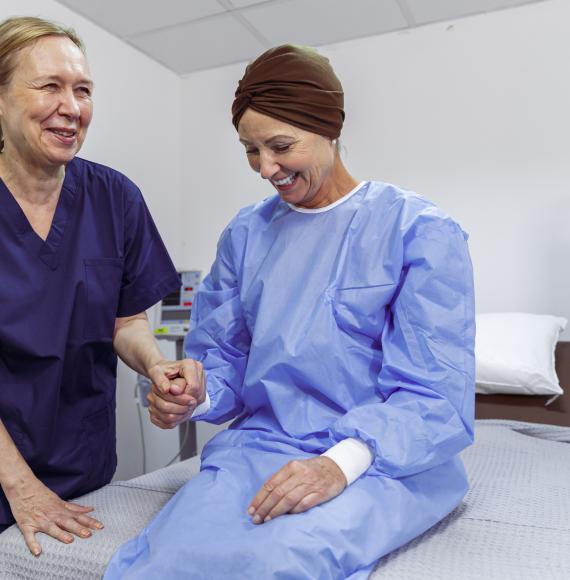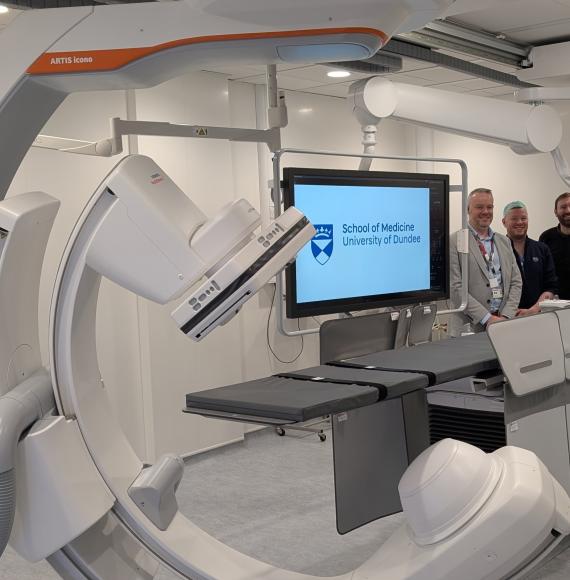Antimicrobial resistance (AMR) has been recognised as one of the most rapidly growing risks to society, with the World Health Organisation (WHO) declaring AMR as one of the top 10 global public health threats[1]. It occurs when bacteria, viruses, fungi and parasites change over time and no longer respond to medicines, making infections harder to treat. The over-prescribing of antibacterial medication has led to increased AMR, costing the NHS £95m a year[2], and poses long-term challenges to the healthcare system. AMR will render some of the most treatable ailments untreatable and could significantly damage our healthcare system’s ability to help patients fight infections.
In 2019, an estimated 4.95 million deaths were associated with bacterial AMR globally, with 1.27 million of those directly attributable to AMR[3]. UK Health Security Agency data also indicates the growing scale of the issue, with the number of severe antibiotic-resistant infections in England rising by 2.2% in 2021 compared to 2020 - the equivalent of 148 severe antibiotic resistant infection strains a day in 2021.[4]
With AMR front of mind for many healthcare professionals (HCPs) including myself, experts from across the world came together at last year’s Antibiotic Stewardship Conference in Brussels, marking efforts to keep antibiotics effective for future generations through the launch of the European Network for Antibiotic Stewardship at the Point-of-Care (ENASPOC).[5]
Two key findings emerged for HCPs to consider. Firstly, an abundance of evidence into the seriousness of AMR already exists. Secondly, testing for C-reactive protein (CRP) which gives information about the severity of an infection, is safe, effective and can drastically reduce the need for antibiotic prescribing. If the CRP level of a patient presenting with an acute cough is below 20 mg/L, then in the vast majority of cases we know that antibiotics are not required if checks on other signs and symptoms for infections have been done.
The case for making CRP testing a core part of the UK’s AMR strategy
During the Covid-19 pandemic, GPs were concerned about overtreating or undertreating infections, and we made daily judgement calls between the need to manage AMR, or risking a face-to-face consultation with a patient who may be infected. Despite this approach, meta-analysis from the European Society of Clinical Microbiology and Infectious Diseases (ESCMID) found that 75% of patients hospitalised with Covid received antibiotics despite only 8% having a bacterial co-infection.[6] By incorporating CRP testing as a routine measure, HCPs can better manage the impact that Covid has had on the overprescribing of antibiotics. As healthcare systems return to pre-pandemic ways of working, our focus needs to shift to the threat of this ‘silent pandemic’.[7]
At the ENASPOC conference, we learnt that the Government in the Netherlands had worked closely with GP and innovation specialist Dr. Rogier Hopstaken on the national implementation of CRP testing as part of their core strategy, resulting in the lowest rate of AMR and the lowest prescribing amongst European countries for antibiotic medication,[8] highlighting the need for an integrated approach. Over here, our Government published the 2019 AMR National Action Plan (NAP) to reduce UK antimicrobial use by 15%.[9] The policy recognises the need for rapid and accurate point of care testing (POCT) but in practice, most antibiotic prescribing is still carried out in the absence of any data about the infection. Yet I’ve seen the benefits of POCT first-hand, in Rochdale, where I work. In 2016, the Medicines Optimisation Group funded Afinion CRP testing machines, by global healthcare company Abbott, to reduce antibiotic prescribing in the area. Now all 36 GP practices use these machines and we’ve worked hard to implement consistent testing across all services, including the out-of-hours team.
In 2017, the Head of Medicines Optimisation at NHS Heywood, Middleton and Rochdale CCG published a report about the use of POCT for CRP. Combined, it showed a 15% reduction in amoxicillin,[10] the most commonly used antibiotic for respiratory tract infection. Consequently, there was also a marked reduction in antibiotics commonly used for urinary tract and skin infection, with the theory being that giving GPs a tool to reduce antibiotic prescribing for one indication in turn encouraged clinicians to review all indications for which they may have been prescribing too readily. However, for CRP testing to be effective across all areas of Britain, it must become a significant component of the UK’s wider strategy.
Understanding the barriers to implementing point of care testing
As part of the Direct Enhanced Services[11] network in England, each locality can now have greater autotomy over which health issues they need to invest in, but some local healthcare services seemingly don’t view AMR as a priority for their area. The reality is that AMR is not just a UK wide issue, it’s a global one, and funding to help reduce the prevalence of AMR through POCT should be centralised.
Another common argument against POCT is the lack of time GPs have to carry out the diagnostics test and concern that the ‘worried well’ would start to ask for regular testing – something I’ve not experienced in the past seven years of using CRP testing. The Afinion CRP test takes just four minutes to process,[12] which can be included within a 10-minute clinical examination if the machine is nearby, or the patient can be directed to another trained member of staff to obtain the sample and relay the result back to the examining clinician. As GPs we know our patients, and we can make informed decisions on whether to carry out a CRP, or if other factors impacting the patient’s health need to be considered such as pre-existing health conditions. As a practice, we’ve also noticed that our patients tend to self-care for longer when they have been reassured in the past that they have a negative CRP and most likely the diagnosis is viral. People no longer come routinely for their ‘winter antibiotics’ that they had done historically for decades. And when faced with patients who believe they require an antibiotic to treat infections, the CRP test can be a conversation-starter about the need to save antibiotics for serious illnesses.
Increasing education on the benefits of POCT amongst newly qualified doctors is also key and can be done by centralising CRP testing as part of the medical school curriculum, whilst working alongside long-established HCPs to highlight the importance of POCT in what should be a collective bid to tackle AMR.
Expanding healthcare services
The NHS and the government recently announced a £645m investment over two years to expand community pharmacy services.[13] This ‘Pharmacy First’ approach means that patients who need prescription medication for things like earache, sore throat, or urinary tract infections, will be able to get it directly from a pharmacy, without a GP appointment.
Training pharmacists therefore will be integral to the success of this model, empowering them to recognise when a patient may need further treatment, and ensuring it’s not viewed as an alternative and easier route to accessing antibiotic medication.
As healthcare professionals working with restricted budgets, it can be tempting to take a short-term view on the issues that Trusts are facing. However, by investing in measures such as the adoption of existing rapid technologies, we can provide long-term better health outcomes and – improvements to lives across the UK. Ultimately, POCT will help support the NHS to address this global health threat, but until CRP testing becomes a core part of the UK’s strategy to support community care services, then resistance to infections is in danger of increasing for our future generations.
*Dr Aggy York received a fee from Abbott to write this educational article. Abbott has reviewed it for accuracy and compliance with regulatory codes of practice.
Image credit: iStock
[1] World Health Organization (10 January 2019), Ten threats to global health in 2019, available at: https://www.who.int/news-room/spotlight/ten-threats-to-global-health-in-2019 Last accessed June 2023
[2] HM Government (18 December 2020), National Risk Register - 2020 edition, available at: https://assets.publishing.service.gov.uk/government/uploads/system/uploads/attachment_data/file/952959/6.6920_CO_CCS_s_National_Risk_Register_2020_11-1-21-FINAL.pdf Last accessed June 2023
[3] The Lancet (19 January 2022), Global burden of bacterial antimicrobial resistance in 2019: a systematic analysis, available at: https://www.thelancet.com/journals/lancet/article/PIIS0140-6736(21)02724-0/fulltext Last accessed June 2023
[4] HM Government (21 November 2022), New data shows 148 severe antibiotic-resistant infections a day in 2021, available at: https://www.gov.uk/government/news/new-data-shows-148-severe-antibiotic-resistant-infections-a-day-in-2021#:~:text=The%20latest%20data%20published%20by,(53%2C985%20compared%20to%2052%2C842). Last accessed June 2023
[5] ENASPOC, the European Network for Antibiotic Stewardship at the Point-of-Care, available at: https://www.enaspoc.com/ Last accessed June 2023
[6] Clinical Microbiology and Infection (4 January 2021), Antibiotic prescribing in patients with COVID-19: rapid review and meta-analysis, available at: https://www.clinicalmicrobiologyandinfection.com/article/S1198-743X(20)30778-3/fulltext Last accessed June 2023
[7] Imperial College London, Antimicrobial resistance: A silent pandemic, available at: https://www.imperial.ac.uk/stories/antimicrobial-resistance/ Last accessed June 2023
[8] CBS Statistics Netherlands (9 February 2016), Within Europe, antibiotics use lowest in the Netherlands, available at: https://www.cbs.nl/en-gb/news/2016/06/within-europe-antibiotics-use-lowest-in-the-netherlands#:~:text=Regional%20differences%20within%20the%20Netherlands,-There%20are%20also&text=Antibiotics%20were%20prescribed%20to%20fewer,to%20children%20and%20elderly%20people Last accessed June 2023
[9] HM Government (24 January 2019), UK 5-year action plan for antimicrobial resistance 2019 to 2024, available at: https://www.gov.uk/government/publications/uk-5-year-action-plan-for-antimicrobial-resistance-2019-to-2024 Last accessed June 2023
[10] CRP testing in HMR (2017) Evaluating the real-world impact of point-of-care C-reactive protein testing for respiratory tract infections: a cohort study using English prescribing data, Last accessed August 2023
[11] British Medical Association (3 March 2023), Enhanced services GP practices can seek funding for, available at: https://www.bma.org.uk/advice-and-support/gp-practices/gp-service-provision/enhanced-services-gp-practices-can-seek-funding-for Last accessed June 2023
[12] Abbott, AFINION™ CRP, available at: https://www.globalpointofcare.abbott/gb/en/product-details/afinion-crp.html Last accessed July 2023
[13] NHS England (9 May 2023), Patients to benefit from faster, more convenient care, under major new GP access recovery plan, available at: https://www.england.nhs.uk/2023/05/patients-to-benefit-from-faster-more-convenient-care-under-major-new-gp-access-recovery-plan/ Last accessed June 2023


















